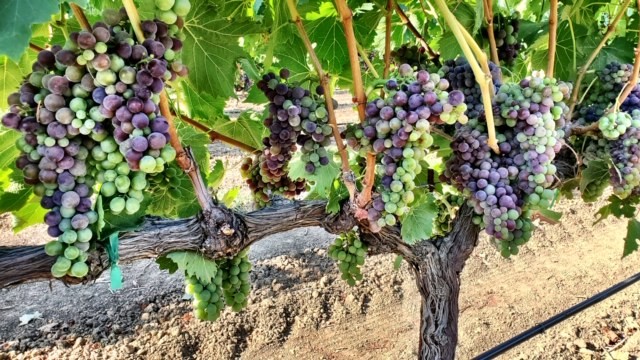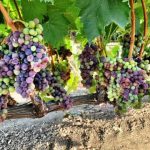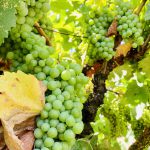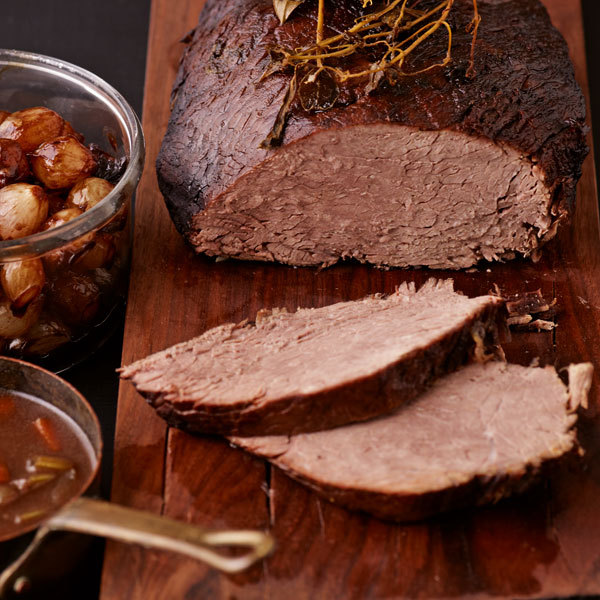2020 Winemaking Juice Update {071720}

We anticipate that we will have Winemaking Juices the week after Labor Day! It’s time to plan this year’s vintage and we have a lot of juice options for winemaking this season!
California:
We have many labels of high quality winemaking juices coming in from California this fall. Cry Baby, Bella California, Lodi Gold, California Select, and Colina del Sol, just to name a few. The fresh juices are stored at 35 degrees and arrive as if the juice just came out of your wine press. You can either hit the juice with SO2 and inoculate with your chosen yeast, or you can let the juice warm up and ferment using the native yeast found in the skin of the crushed/pressed grape.
Lanza Vineyard Juices:
The Lanza winemaking juices arrive directly from Lanza-Musto Vineyards in Suisun Valley, CA. Varieties available are – Muscat Cannelli, Rose of Gamay (Pink), Chardonnay, and Sauvignon Blanc. They come in 5.25 gallon pails, are cold settled, with zero adjustments made to the juice. If you want Suisun Valley fruit but don’t have a crusher these are a great option.
Fresco Juices:
Mosti Mondiale Fresco is proud to be the only product to offer home winemakers their own vineyard in one unique package. Each pail is carefully pre-balanced, inoculated with the perfect yeast, and infused with liquid enzymes to help create a delicious and palate pleasing wine. The Fresco juices come from California, Australia, and Italy.
Italian Juices:
Our Italian juices will arrive in late October. The Italian juices are always full of flavor and provide palate pleasing, age worthy wines.
Give us a call or shoot us an email to discuss your 2020 vintage!
877-812-1137 – sales@juicegrape.com
Lanza-Musto Vineyards and Suisun Valley Harvest Update {071720}

Lanza-Musto Vineyards and Suisun Valley Harvest Update
as of 07-17-20
We were able to catch up with Ron Lanza this week. He said, “Harvest in Suisun Valley is looking to be about 1 to 2 weeks earlier than last year. Bud break was 10 days earlier than last year and Mother Nature seems to be keeping up with that trend. We are already seeing color (veraison) in the Brunello Clone Sangiovese vineyards! We have been busy doing a lot of thinning this year and the crop should be the perfect size. The Malbec is looking especially good this season. We are looking forward to sending these great grapes to the East Coast!”

Grape Varieties Available:
- Barbera
- Chardonnay
- Clone 8 (“Valley Cab”) Cabernet Sauvignon
- Clone 15 Cabernet Sauvignon
- Clone 169 Cabernet Sauvignon
- Koch Cabernet Sauvignon
- Malbec
- Muscat Cannelli
- Merlot
- Mouvedre
- Petite Sirah
- Petit Verdot
- Primitivo
- Riesling
- Brunello Clone Sangiovese
- Sauvignon Blanc
- Syrah
- Tempranillo
*All grape varieties are available in 36lb cases or in frozen must by request
Juice Varieties Available:
- Chardonnay
- Napa Gamay (Pink)
- Muscat Cannelli
- Riesling
- Sauvignon Blanc
*All juice varieties are available in 5.25 gallons pails, cold settled, zero additions or balancing done to the juice.
For more information regarding the Fall Harvest please feel free to contact us at sales@juicegrape.com or give us a call at 877-812-1137. We are looking forward to helping you with your next great wine!
2020 Washington State Harvest Update {7/14/20}
Washington State is off to a great growing season. It started out a little cooler than normal but the weather is heating up and we are seeing 80 degrees during the day and 60 degrees at night. In late August, Washington will be seeing 90+ degrees during the day and 50 degrees at night. The Merlot and Cabernet Sauvignon should start harvesting around mid-September to arrive at Musto Wine Grape around last week in September/1st week in October.

The Cabernet (Clone 33) from Washington State will be coming from the Candy Mountain AVA. It is 784-925 elevation with around 60 acres planted. The soil is a mix of scooteney silt loam, shano silt loam, warden silt loam, and warden fine sand loam. Candy Mountain is a south-facing slope that sits just southeast of Red Mountain (Napa Valley of WA). We are calling Candy Mountain the “Suisun Valley” of Washington State. With outstanding growing conditions, this AVA produces wine that is fruit forward, rich, bold, and intense.
If you’re interested in trying a different Cabernet, the Washington State Cabernet is a great option for your 2020 Vintage. More on the arrivals of these grapes in the coming weeks. MWG will be sourcing Cabernet, Merlot, Cabernet Franc, and Pinot Noir from Washington State this season. The grapes are available in 36lb cases or by request as frozen must.
For more information regarding the Fall Harvest please feel free to contact us at sales@juicegrape.com or give us a call at 877-812-1137. We are looking forward to helping you with your next great wine!
2020 Central Valley Grape Harvest Update {7/10/20}
We spoke with Joe from Cry Baby Vineyards this week and he said, “the 2020 harvest is off to a great start. We had good growing conditions throughout the year and veraison is happening in the Black Muscat and Teroldego vineyards. The crop is looking to be of normal to light size. This means well balanced berries for great winemaking results. We are projected to have some higher degree days in the coming weeks. Due to this, we are thinking harvest might be 1-2 weeks earlier than last year. The earliest ripening fruit should start coming off the vine around August 20th if the weather stays on this track.”
We at Musto Wine Grape will keep you updated as the California harvest develops!
Frank Musto’s Black Muscat Vineyard

Black Muscat Grapes going through Veraison

What is Veraison?
Veraison occurs when the berry transitions into the ripening stage. From now forward the berry will increase in sugar concentration until it is harvested at the desired brix level. Grapes for sparkling wine or champagne are harvested around 17 brix and grapes for still wine are harvested around 25 brix. The brix level will determine the alcohol level in the wine. For example, a grape picked around 25 brix should create a 12.5% alch by volume wine.
Teroldego going through Veraison

Interested in making Black Muscat or Teroldego?
Check out these blog posts below for more details!
Teroldego
Black Muscat
If you are interested in purchasing wine grapes or winemaking juices this fall please email sales@juicegrape.com or call 877-812-1137 for pricing and information. We are looking forward to speaking with you about your 2020 vintage!
2020 Lodi Wine Grape Harvest Update {7/9/20}
The 2020 Lodi Wine Grape harvest is starting to take shape. Crop timing is about 5 to 7 days ahead of last year, making it more of a “normal” crop year. The fruit set is looking average to light, but mostly average in size. This should produce good, well balanced berries for winemaking. Lodi has had ideal wine growing weather and is expected to have a great harvest this year.

Here’s a quick look at some of Lodi’s more popular varieties and when they might start to harvest:
Chardonnay
- Crop: Average
- Harvest Start Date: 8/25/20
Pinot Grigio
- Crop: Average
- Harvest Start Date: 8/21/20
Pinot Noir
- Crop: Average
- Harvest Start Date: 8/28/20
Cabernet Sauvignon
- Crop: Average
- Harvest Start Date: 9/5/20
Sauvignon Blanc
- Crop: Average
- Harvest Start Date: 8/26/20
Merlot
- Crop: Average
- Harvest Start Date: 9/4/20
Zinfandel
- Crop: Average
- Harvest Start Date: 9/4/20

If you are interested in purchasing wine grapes or winemaking juices this fall please email sales@juicegrape.com or call 877-812-1137 for pricing and information. We are looking forward to speaking with you about your 2020 vintage!
A note about Covid-19 precautions: Delta packing continues to be extra vigilant when it comes to the safety of their employees and customer to ensure that the grapes are harvested and shipped safely this year. In the vineyards and main facility, temperature checks are taken daily for everyone, hand washing and sanitation stations are in every work area, and social distancing is required.
Apple Pie Bites Recipe + Wine Pairing
Apple Pie Bites Recipe + Wine Pairing

If you’ve been in the mood for a crispy, flaky treat you’re in luck – we’ve taken this delicious pie and turned it into your new favorite bite sized treat! There are a few different ways to approach this and it may depend on your level of expertise. I personally suck at making pie crust so I take the easy way out by buying the premade refrigerated ones. If making your own crust is your own personal super power, I say go for it! It’s just a battle I can’t win. The filling is easy for even the earliest of beginners, but you can also buy premade fillings to save time – I just love using fresh apples! If you’re in Connecticut, Lost Acres Orchard in North Granby, Scott’s Orchards in Glastonbury, Lyman Orchards in Middlefield and Rose Orchards in Branford are a few favorites to get the freshest apples!
Let’s get started with what you’ll need:
You’ll need about 2-2 & ½ cups of sliced or diced apples (about 1 pound or 3 medium apples)
1 tablespoon lemon juice
1 ½ cups of water
¾ cups granulated sugar
8 teaspoons of cornstarch
1 teaspoon cinnamon
¼ teaspoon salt
¼ teaspoon nutmeg
You have the freedom to adjust each ingredient as everyone’s preferences are different, that’s what fun about making things from scratch – you have total control over what you’re making and the taste you’ll yield!
What you need to do:
Preheat your oven to 425 degrees
Unroll the pie crust, and using a 3-4 inch cookie cutter cut 6-8 circles of crust. Roll out scraps of dough and cut and additional circles you can.
Place your apples in a large bowl and toss with lemon juice.
Place water, sugar, cornstarch, cinnamon, salt and nutmeg in a medium sauce pan. Stir to combine then bring to a boil over medium heat stirring often. Once the mix comes to a boil, let it boil for 2 minutes. Let cool and allow the mixture to thicken.
Once cooled, place your apple filling in each circle. This can be a spoonful if you diced your apples or about 1-2 slices.
Fold the crust in half and pinch around the edges to close.
Sprinkle with cinnamon and sugar and bake for 20 minutes or until golden brown and flaky.
Once cooled, melt butter and whisk with powdered sugar, vanilla and half a tablespoon milk to make a loose drizzle to add on top.
But before you enjoy – grab a bottle of Chenin Blanc! The wine’s bubbling crispness and high acidity helps offset the pie’s rich and buttery crust. Now you’re ready to kick back and enjoy your well earned treat!
Want to make your own Chenin Blanc? Musto Wine Grape Company is New England’s largest supplier for winemaking products and services. From home winemakers to wineries, we’ve got you covered! Give us a call at 877 – 812 – 1137 to speak with someone to get you started.
A White Wine Drinker’s First Shot at Tasting Red Wines
A White Wine Drinker’s First Shot at Tasting Red Wines
Christina has given me a few bottles of wine to stretch my tasting abilities and educate my nose and taste buds. Here’s how it went! My go-to’s have always been a sweet white or rosé, I haven’t really ventured out with reds mostly because the first red I had was gross and I figured all red wines were like that. I was definitely wrong! Note, I am a beginner at tasting red wines so these are very amateur notes.
The first wine Christina gave me to try was a 2018 Sonoma Cabernet Sauvignon.
Ashley: I smell cherry the most, with kind of a plumy smell, and maybe prune; but cherry was the first thing I smelled.
Christina: Great! Next time think about what kind of cherry – Black cherry? Red cherry? Ripe cherry?
Ashley: It has a nice deep purple toned color to it and has no floaters.
Christina: Good, the browner the tinge of the wine the older the wine is.
Ashley: There’s no carbonation or fizz – I’m used to the wines I drink having bubbles or a little fizz to them.
Christina: Good! Fizz really only happens if the wine wasn’t taken care of or if it is a sparkling wine.
Ashley: It makes my mouth pucker at first but doesn’t leave my tongue dry for long, it goes away quickly.
Christina: If you salivate that means the wine is high in acid, if it dries out your mouth that means tannins are present. Sometimes people use the word “pucker” referring to both. Next time try to think about what is causing that feeling? Is it the salivation in your mouth like if you just tasted a bitter lemon, or is it the drying out of your mouth/chalky feeling in your mouth?
Ashley: Alcohol is pretty high!
Christina: Glad you picked up on this! Most Cabernets from Sonoma and Napa California are higher in alcohol.
Ashley: Kind of tastes like a Cigar.
Christina: That usually has to do with barrel aging or growing region; you find this characteristic a lot in red wines from Chile and Argentina. If you find it in a CA wine it’s usually due to barrel aging in a heavy toasted barrel.
Ashley: I pick up black pepper but it’s not strong.
Christina: I’m glad you thought about the type of pepper. That’s great. Try to be as specific as you can be.
Ashley: It’s easy to swallow but gives a hot feeling in my chest, kind of like if you drank something hot with cinnamon.
Christina: That is an indicator of high alcohol. Good job picking up on that!
Ashley: Kind of a charred taste, like eating the black burnt part of a marshmallow or pizza crust.
Christina: This has to do with the aging process of this wine. It sounds to me like it was a little “tight” and could have been laid down for a few more years so the balance of fruit and earth could shine through. Great specific description of what you tasted.
Ashley: It’s not something I would drink on a regular but it wasn’t terrible.
Christina: Great, you are figuring out what you like. Think about what type of food you would have this with and if it would change your perception of the wine.
Next was a 2015 Cabernet Sauvignon 169.
Ashley: This one gave a rush of burning through my nose upon first sip and swallo2. It reminds me of the sensation you get when you burp through your nose
Christina: This means it’s got a decent amount of alcohol in it.
Ashley: I definitely taste black pepper with this one; it’s very smooth, smoky and earthy. Kind of when you eat a vegetable right out of the garden without washing it and it has like dirt on it haha!
Christina: Haha those are good descriptors!
Ashley: It doesn’t seem to be too high in tannins, after a few sips my tongue started to dry out, but right off the bat I didn’t feel much dryness.
Christina: This means the tannins were balanced, soft, and supple. That’s a good thing for red wines.
Ashley: I also got black cherry and plum in this one, though it is dry it kind of gave me the impression that it was going to be slightly sweet, because it smells like it but it definitely was not sweet.
Christina: This happens a lot with dry red wines; you get sweet notes on the nose but not on the palate. Good job picking up on the fruit aromas!
Ashley: Overall this is the first red wine I didn’t hate and would actually drink again! I definitely see myself enjoying it with a steak for dinner.
Christina: Wow that’s great!
The last wine I tried was a 2018 Chilean Malbec.
Ashley: Very earthy, I got that same dirt taste from the cab but it’s way more prominent with this one.
Christina: Good descriptors!
Ashley: It’s also very dry, significantly drier and higher in tannins than the cab 169. It dried my tongue out on the first sip and kind of made my throat feel dry too.
Christina: Perfect! Now you know the difference between medium/balanced tannins and high tannin wines.
Ashley: I do pick up on a black pepper, and get some licorice, some bitter blackberry as well. But the dirt taste is what my mouth captures first and sticks throughout the whole experience.
Christina: Okay good observations and descriptors!
Ashley: I wasn’t a fan of this one because the dirt taste was all I could focus on.
Christina: Good! You know now that you don’t like high tannin earthy wines.
Reflection
The Cab 169 from Suisun Valley, CA definitely left an impression on me and I am going to explore with other wines from the similar region and see what else I can take a liking to! Overall this was a fun experience and I look forward to experimenting and broadening my wine horizons. A big thanks to Christina for being an awesome teacher, it’s looking like I’ll be a pro at tasting and winemaking in no time!
If you are interested in wine tasting and help with developing your palate, do not hesitate to reach out to us at Sales@JuiceGrape.com, or by calling us at 877-812-1137. At Musto Wine Grape we are always searching for ways connect with you and help you along in your winemaking and wine loving journey. We offer a wide variety of products, services and classes to help you create a wine you love and assist you in being able to experience the way wine was created to be experienced!
For updates on harvests, educational tutorials and more, follow us on Instagram and Facebook.
National Donut Day Donut & Wine Pairings
Happy National Donut Day! What better way to celebrate than pairing those tasty round treats with some wines that allow you to unlock a whole new world of flavors?! Let’s get to it.

First we’ll start with a classic, the chocolate frosted donut with sprinkles!
Prosseco is the perfect pairing for this donut. The airiness of the donut lounging underneath the decadent frosting is a match made in heaven with this bubble-filled wine. The sugary frosting brings out the sweetness of the Prosecco. For Connecticut residents, try Donut Crazy’s Chocolate Frosted Sprinkle Donut! They have multiple locations in CT ranging from West Hartford to Branford.
Next, how about a jelly donut? Yes please.
Rosé and a jelly donut, specifically one with raspberry jelly filling, compliment each other extremely well. The bitterness of Rosé softens when you pair these two together, giving the raspberry flavors the center stage. At the same time, the wine mutes the sugary sweetness of the donut’s sugar coating, making it one elegant bite! We recommend once again Donut Crazy’s Powdered Jelly Donut, because they’re just that good!
Now the plain jane glazed donut, an underdog in the donut world. Simple yet total donut perfection.
Grab some Chardonnay for this one – the underlying hints of vanilla and toffee in the donut go perfectly with the same flavors in the wine. Chardonnay manages to bring out these flavors in this donut rather than mask them. Despite the sweetness of the donut the Chardonnay remains smooth! Grab your glazed donut from Neil’s Donuts in Wallingford, a donut goldmine in CT!
Last but certainly not least, the double chocolate glazed donut. A chocolate lover’s saving grace.
Finding the right wine to go with Chocolate can have you standing in the wine isles for a while pondering of which one will go best, but we’ll make it easy for you: Syrah. The bold double chocolate between the cake and the frosting of this donut pairs perfectly with the dark, jammy, fruit-forward flavors of Syrah. This pairing will give you a boozy chocolate covered strawberry vibe, how can you resist?! Pick up some Krispy Kreme Glazed Chocolate Cake Donuts for this pairing, yes we said donuts as in multiple donuts, get a whole dozen because one will not be enough. We speak from experience.
We wish everyone a happy and yummy national donut day!
Winemaking Nutrients – Why Add Them?

Yeast nutrients and wine additives set your wine up for success. Your wine yeast needs to be treated well. When you add yeast nutrients during your primary fermentation it optimizes the yeast and produces a successful fermentation with balanced flavors and aromas. These nutrients are made up of vitamins and minerals that are present in wine grapes. You can also utilize nutrients when making your malolactic bacteria addition, and other nutrients that help with color preservation, mouthfeel, and tannin structure.

















Recent Comments